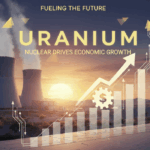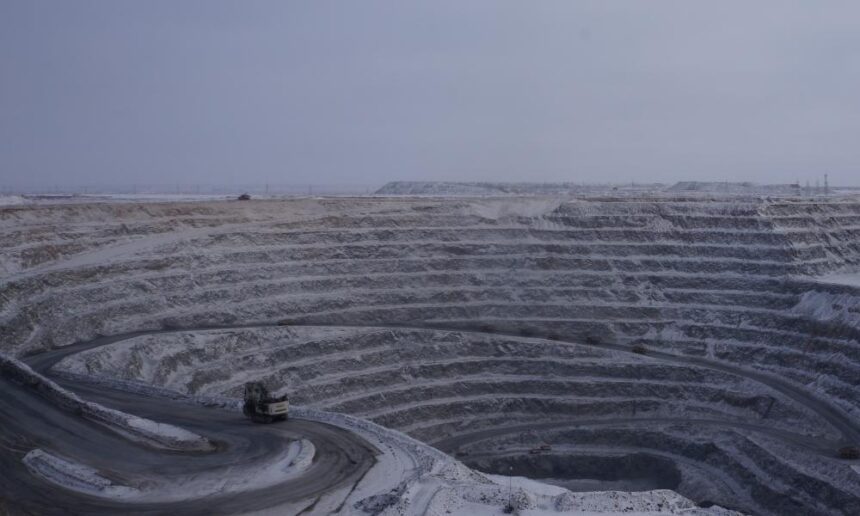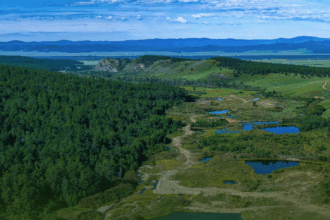You cannot imagine Mongolia without its coal. Coal is a mineral resource that is responsible for one-fourth of Mongolia’s public budget and total export revenue. Also, coal provides 80 percent of our electric power and 90 percent of heating. We currently have no other choice other than burning coal as a source of heat during the winter because it gets as cold as minus 40 degrees Celsius.
Mongolia has recently started selling its high calorie coal to China. It helped our coal industry develop at a more rapid pace. Total coal reserves of Mongolia are estimated to be 173.3 billion tons while the proven reserves stand at 24 billion tons. In 2013, Mongolia extracted a total of 33 million tons of coal, two-thirds of which was exported and nine million tons were used to produce electricity for domestic use.
The private sector, trade associations, investors, and the government meet every year at the Coal Mongolia Conference to discuss about crucial issues of the coal industry, exchange information, and talk about existing challenges and future projections. The Coal Mongolia 2014 Conference surpassed the conference from the previous year by its attendance of more than 1,000 delegates from eight different countries.
UNDER THE SPOTLIGHT
Government policy: It was unusual that the conference this year was attended by the Prime Minister, Minister of Foreign Affairs, Minister of Mining, and Minister of Finance, each of whom gave a speech. Those who represented the government pointed out that the government of Mongolia had finally set a clear policy to be pursued in the coal industry, revised the law to support investment, and stabilized the business environment. They also called on investors to make investments in the coal industry.
The government is supporting coal processing and has started several projects to refine coal, build a coking plant, construct a power plant nearby a coal deposit, and produce liquid fuel and gas from brown coal and combustible shale. It is supposed that in the near future, Mongolia will not only be able to fully meet its domestic demand on its own but also be a coal exporter at the same time. MAK, Baganuurt and MCS companies have started projects to produce gas from coal at Aduunchuluun mine. They have completed feasibility studies and are expecting to commence operations soon. Also, companies such as Genie Oil Shale have discovered large deposits of combustible shale and are working to produce liquid fuel using the newly found resources. The government has agreed with China to implement a project worth 30 billion USD to build a coal gasification plant and construct a pipeline to Beijing. They are currently in the selection process of a coal mine that will be suitable for this project.
Outlook for coal market in China: According to Fenway, a company specializing in market research, China’s demand for coking coal is projected to increase by five percent in 2014. Their supply of coking coal is also estimated to grow by five percent. However, it has been forecasted that China’s domestic production of coking coal will not increase dramatically while its imports are set to grow by 28 percent, to reach 95 million tons. It is mainly because China is buying more coking coal than they need to put away for future use. In 2013, 1,800 mines, 25 percent of total coal mines in China, were forced to close down due to running deficits. It urged China to increase its coking coal reserves. As the number of coal supplier countries go up and China’s growth rate slows down, their supply will keep increasing while import prices continue to be reduced. It means that there is a strong pressure on the price of coal China purchases from Mongolia.
New requirements for transportation and logistics: Mongolia is still using trucks for coal transportation. When our coal reaches the eastern border areas to China, its initial price is doubled due to high transportation costs. The government has purchased the paved road built by Energy Resources from Tavan Tolgoi mine to the southern border and is set to have every truck use this road starting from this month. It will help the local community who are currently suffering from excessive dust issues.
The engineering drawings of a project to build a railroad spanning 18 kilometers that will cross the border at Gashuunsukhait Port have been completed and its construction is set to commence this spring. It has also been decided that the government takes over the construction work for the railroad from Tavan Tolgoi mine to the Chinese border that was initially started by Energy Resources. Mongolia needs to supply coal to its only market using the same track gauge employed there. Otherwise, there will be many problems and complications. Russia, which uses broad railway gauge, also exports coal to China. In 2012, Russia’s coal exports to China were three times higher than Mongolia’s.
Attendees to the Coal Mongolia 2014 Conference were urging the government to build international ports that provide 24 hour service, form an agreement with China to allow the use of railroad for transit goods, and reduce the rates of 21 types of taxes collected by Mongolian customs at the border and another 10 taxes imposed by China.
New technology: An agreement has been recently signed to introduce the technology first presented during the last Coal Mongolia Conference that is employed by Wirtgen, a Germany company specializing in coal extraction, to Mongolia’s Shivee-Ovoo coal mine. Furthermore, other technologies that allow coal washing without using water were presented at this year’s conference. Such technologies were particularly interesting to Mongolia coal mines that operate in the Gobi region. There was a proposition to produce electricity at coal mines in Mongolia and join the new Silk Road to transport energy to Europe. You have to dream big enough to achieve success.
GOVERNMENT INVOLVEMENT IN COAL INDUSTRY
It could be clearly seen at the Coal Mongolia 2014 Conference that our government has a great desire to enter the coal industry. The coal industry is operated very well by the private sector almost everywhere in the world. When government gets involved in the business however, free competition is taken away from the industry while corruption takes over. Furthermore, the industry dominated by government involvement becomes a target for political debate and slows down economic growth. Ever since the state-owned Erdenes Tavan Tolgoi Company was established at Tavan Tolgoi mine, Mongolia has been burdened with huge debts and five years were wasted because railroad construction was stopped. Our government today has purchased a paved road built by the private sector using the loans they acquired by issuing bonds. On top of that, the government has taken over the construction work of a railroad that was initially invested by the private sector. In doing so, our government is putting taxpayers’ money in unnecessary risk.
China’s demand for coal is enormous and their import will not decrease. However, it is still unclear whether our prices can compete with that of other supplier countries. But why is the government acquiring huge foreign loans only to invest in mining infrastructure and plants? Who will profit from it? What if we get stuck and cannot sell our coal? Who will repay the debt when that happens? What is the reason that no one has mentioned this risk we are taking?
Why cannot we spend those millions of dollars on health and education sectors and let the private sector invest in mining? Would it not be better to spend the money on repairing some school buildings rather than having the state-owned company in Tavan Tolgoi purchase some low quality tires for 3.2 billion MNT?
Government involvement in big projects is only beneficial to politicians and their associates in the business. It is the main reason why our government is entering the coal industry. Tavan Tolgoi mine was split up between government officials and ministers from the beginning. Those who did not get their share at that time are the current politicians who are fighting for wealth redistribution claiming that they are bringing justice. As a result, Mongolia faces an equal likelihood of getting stuck because of Tavan Tolgoi and developing through it.
The government needs to privatize state-owned companies, introduce more responsibility in government spending, help raise investments, and fulfill their primary duty to ensure compliance of laws and standards. The risks that come with the coal industry should be borne by shareholders of a given company, not the public. It will increase the likelihood of using our coal to develop rather than get stuck with it. Otherwise, our government will keep acquiring foreign loans to repay its previous debts, which will put the people in the risk of getting stuck with the coal. It will also cause greater risks of increased levels of corruption, economic inequality, and social disparity. Ultimately, it may even lead to dictatorship.
Coal might have an appearance that may not be so pleasing to the eye, however, this dark-looking product of ours could bring about a future that can either be dim or bright for us. Mongolia’s fate has become directly dependent on its coal industry.
2014.02.26












